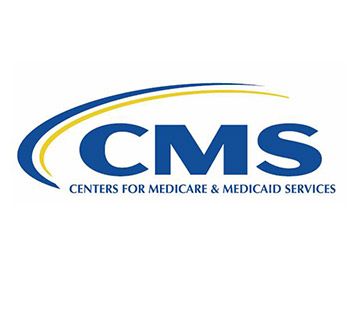On Friday, May 13, the Government Accountability Office (GAO) publicly released a new Medicare report entitled, “Claim Review Programs Could Be Improved with Additional Prepayment Reviews and Better Data,” which it shared with the Congress and the Centers for Medicare & Medicaid Services (CMS) in April. The report is addressed to the Senate Finance Committee Chairman Orrin Hatch (R-UT) in response to his request.
The Report examines:
1. The differences, if any, between prepayment and post-payment reviews, and the extent to which the contractors utilize these types of reviews;
2. The extent to which the Medicare claim review contractors focus their reviews on different types of claims; and
3. CMS’s cost per review and the amount of improper payments identified by the claim review contractors per dollar paid by CMS.
In compiling the Report, the GAO reviewed Administration documents, interviewed CMS officials, Recovery Auditors (RAs), and Medicare Administrative Contractors (MACs). The GAO also interviewed representatives from 10 Medicare provider/supplier organizations that have experienced claim reviews on both a pre- and post-payment review basis. The AAA worked the GAO by participating in a telephone interview and providing written comments.
The GAO examined three types of contractors – the RAs, the MACs, and the Supplemental Medicare Review Contractor (SMRC). These contractors are responsible for reviewing claims that are at high risk of improper payment and claims that pose the greatest financial risk to Medicare. Only MACs conduct both pre- and post-payment reviews. RAs and the SMRC conduct only post-payment reviews, but RAs did participate in a pre-payment review demonstration project. RAs are paid on a contingent basis from recovered overpayments. During the demonstration, RAs were paid contingency fees based on claim denial amounts.
In its review, the GAO found that few differences exist between pre- and post-payment reviews, but noted that pre-payment reviews “better protect Medicare funds.” The GAO found that CMS is not always able to collect overpayments from post-payment reviews and that post-payment reviews require more administrative resources than pre-payment reviews.
The provider/supplier organizations highlighted two issues that need to be resolved with regard to pre-payment review audits. First, they identified that the option to hold discussions with RAs before payment determinations are made in the context of post-payment reviews can be helpful. These discussions are not part of the pre-payment review process; nor are they part of the MAC process. CMS indicated that it is not practical to have such an option in these contexts because of the timing requirements.
Second, the providers/suppliers noted that pre-payment reviews create cash flow burdens, in light of the appeals process. When appealing a post-payment review, providers/suppliers retain their Medicare payments through the first two rounds of review. If the denial is overturned at a higher level, CMS must pay back the recovered amount with interest accrued. However, for pre-payment reviews, providers/suppliers do not receive payment and CMS does not provide interest on the dollars withheld if the provider/supplier wins on appeal.
MACs have traditionally relied upon post-payment review. MACs will also use post-payment reviews to analyze billing patterns to inform other review activities, such as future pre-payment reviews and educational outreach. CMS has encouraged MACs to perform extrapolation, especially for providers/suppliers that submit large volumes of low-dollar claims with high improper payment rates.
The SMRC reviews often include studies to develop sampling methodologies or other policies that could be rolled out more broadly in the future.
The GAO also found that different contractors focused on different claims during 2013 and 2014. RAs focused on inpatient claim reviews primarily. RAs have the discretion to select the claims they review and the GAO stated that “their focus on reviewing inpatient claims is consistent with the financial incentives associated with the contingency fees they receive, as inpatient claims generally have higher payment amounts compared to other claim types.” The GAO also found that RA claim reviews had higher average identified improper payment amounts per post-payment claim review relative to other claim types in 2013 and 2014. For the upcoming contracts, CMS has indicated that it will more closely monitor RAs to ensure that they are reviewing all types of claims. For DME claims in particular, CMS has increased the contingency fee percentage paid to the RAs for DME, home health agencies, and hospice claims.
In contracts, MAC claim reviews focused primarily on physician and DME claims. DME claims accounted for 29 percent of their reviews in 2013 and 26 percent in 2014, while representing 22 percent of total improper payments in fiscal year 2013 and 16 percent of improper payments in fiscal year 2014. DME claims also had the highest rates of improper payments in both years.
Physician claims is a broadly used term that includes labs, ambulances, and individual physician.
The SMRC focused its claim reviews on studies that CMS directs the contractor to conduct. In 2013, the SMRC reviews focused on outpatient and physician claims, but in 2014 the focus shifted to home health agency claims and certain DME suppliers.
The GAO concluded that both RAs and SMRC generated savings for CMS, but unreliable data prevented comparing these results to those of MACs. CMS paid the RAs an average of $158 per review; the RAs averaged $14 in identified improper payments per dollar paid by CMS in both 2013 and 2014. CMS paid the SMRC an average of $256 per review, and the SMRC averaged $7 in identified improper payments per dollar paid in 2013 and 2014. The higher SMRC costs related to the study costs and extrapolation.
CMS lacks reliable MAC cost and savings data. CMS does not collect reliable data on claim review funding and does not have consistent data on identified improper payments. While CMS has established ways to collect this information, some MACs are not reporting it. MACs also use different methods to calculate and report savings.
The GAO recommended that CMS take two actions:
• In order to better ensure proper Medicare payments and protect Medicare funds, CMS should seek legislative authority to allow the RAs to conduct prepayment claim reviews.
• In order to ensure that CMS has the information it needs to evaluate MAC effectiveness in preventing improper payments and to evaluate and compare contractor performance across its Medicare claim review program, CMS should provide the MACs with written guidance on how to accurately calculate and report savings from prepayment claim reviews.
CMS did not agree with the first recommendation, stating that it has a strategy to move away from “pay and chase” using different policies, such as prior authorization initiatives and enhanced provider enrollment screening. CMS concurred with the second recommendation.


















